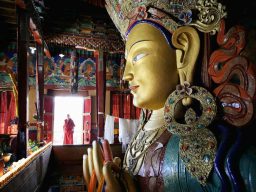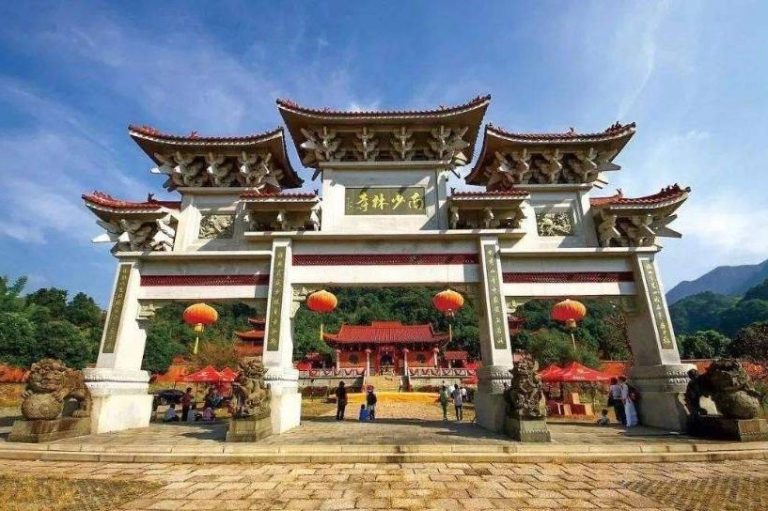



Our Monastries and Temples
Historical and Contempoary
Bodhidharma was a legendary Buddhist monk who is said to have brought Zen Buddhism to China from India in the 6th century. He is also credited with founding both the Shaolin monasteries and several others of note and temples in Tibet, where his teachings and practices continue to be followed to this day.
These monasteries and temples serve as centres of spiritual practice and learning for Buddhists in Tibet, providing a place for meditation, study, and worship. Bodhidharma's influence on Tibetan Buddhism is still felt strongly, as his teachings have been passed down through generations of monks, nuns and practitioners.
Our teachings and work come from this monastic heritage.
Some of our spirtual homes
The monasteries and temples are sacred places where we gain our teachings and wisdom. It is our duty to care for and restore these spiritual sites, as they hold the key to our spiritual growth and enlightenment. By preserving these sacred spaces, we are able to continue the teachings of the Buddha and pass on his wisdom to future generations.

Rongbuk Monastery, Tibet
Rongbuk Monastery, located in Tibet, is considered the spiritual home of the incarnations of Bodhidharma and of the Upeska Order in the context of Buddhism.
This ancient monastery holds great significance for followers of the religion, serving as a place of pilgrimage and meditation.
The peaceful surroundings and sacred atmosphere of Rongbuk Monastery make it a popular destination for those seeking spiritual enlightenment and connection with the teachings of Bodhidharma and the Upeska Order.

Shaolin South, China
Shaolin South is a martial arts school that traces its origins back to the legendary Bodhidharma. The school has passed down the teachings of Chan Buddhism through the practice of martial arts.
Shaolin South also has connections to ChaDao, the Way of Tea, which is a traditional practice of preparing and serving tea with mindfulness and reverence devised by Master Yu Lu a former monk of this monastery.

Kathmandu Pharping Temple, Nepal
The Pharping Temple, located in Kathmandu, holds great significance in Nepalese ChaDao. This ancient temple is believed to be a sacred site where Guru Padmasambhava, also known as Guru Rinpoche, attained enlightenment. It is said that he meditated in a cave here and subdued the demons, bringing peace to the area.
Pharping Temple is also associated with the concept of Shambhala, a mythical kingdom that is said to embody the principles of peace, harmony, and enlightenment.
Pharping Temple serves as a reminder of the deep connection between spirituality, tea culture, and the pursuit of enlightenment in Nepalese and Buddhist traditions.

Gillwell Park, London, UK
The Gilwell Park Buddha Sala is a sacred space dedicated to the practice of Buddhism and scouting in London, UK.
Located at Scouts UK's headquaters it is a permanent link to our work with young people of all faiths and none.
It serves as a place for meditation, reflection, and spiritual growth.
One of the most significant practices held in this sacred space is the ChaDao Ceremony, which is a traditional tea ceremony that emphasises mindfulness.

Shaolin North, China
The restoration of Shaolin North is a significant event in the history of Buddhism and chadao. Shaolin North, a renowned Buddhist temple known for its martial arts tradition, has a long history intertwined with the practice of chadao, the way of tea. The restoration of this sacred site not only preserves its cultural heritage but also revives the spiritual practices that have been passed down through generations.
Shaolin North serves as a reminder of the interconnectedness of spiritual traditions and the importance of preserving ancient wisdom for future generations.

Ghoom, Darjeeling, India
The Ghoom Monastery, also known as the Yiga Choeling Monastery, is located in the tea growing town of Ghoom near Darjeeling, India. It is one of the oldest Tibetan Buddhist monasteries in the region and holds great significance in the history of Buddhism. The monastery was established in 1850 by Lama Sherab Gyatso and is home to a large statue of Maitreya Buddha.
One of the most important aspects of the Ghoom Monastery is its connection to the Kalachakra teachings. Kalachakra is a complex and advanced Buddhist teaching that focuses on the concept of time and cycles. The monastery has hosted several Kalachakra initiations over the years, attracting thousands of devotees from around the world.

Shambala
Shambala is a spiritual learning space beyond time that is accessed through ChaDao Buddhism.
Shambala is seen as a sacred and mystical realm where enlightenment and spiritual growth can be achieved. It is believed to be a place of peace, harmony, and wisdom, where individuals can connect with their inner selves and the universe.
Through the practice of ChaDao and Buddhism, one can tap into the teachings and energies of Shambala to deepen their spiritual understanding and journey towards enlightenment.
To our order, Shambala is a very real place.

The Orchard Project, Wales UK
Our project to establish a Shambala Portal and Buddhist temple in Wales UK, called The Orchard, is an exciting endeavor that aims to create a sacred space for spiritual practice and community.
The Orchard will serve as a place of refuge and contemplation, where individuals can come to connect with the teachings of Buddhism and cultivate inner peace and wisdom. Through the practice of meditation, mindfulness, and compassion, visitors to The Orchard will have the opportunity to deepen their understanding of themselves and the world around them.
This project embodies the principles of Buddhism, promoting harmony, compassion, and enlightenment for all beings.
Additional Temples
Phoden Garden, Dharmamasal, India
Our current administrive lead
Dorje Karma Centre, San Francisco
One of our ChaDao training projects
We need your consent to load the translations
We use a third-party service to translate the website content that may collect data about your activity. Please review the details and accept the service to view the translations.

